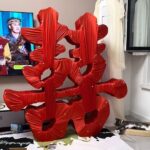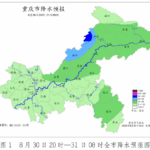Hundred Regiments Offensive Memorial Hall actively serves as a demonstration base for patriotic education
|
|
Historical image related to the Hundred Regiments Offensive
Photo shows Eighth Route Army soldiers cheering in victory after capturing Dongtuanbao in Laiyuan, Hebei during the Hundred Regiments Offensive.
|
|
|
Historical image related to the Hundred Regiments Offensive
Photo shows Eighth Route Army soldiers studying together during the Hundred Regiments Offensive.
|
|
|
Historical image related to the Hundred Regiments Offensive
Photo shows Eighth Route Army soldiers demolishing the chimney of the Xinkuang Mine.
|
|
|
Historical image related to the Hundred Regiments Offensive
Photo shows a machine gun position of the Eighth Route Army during the Battle of Shinao Mountain.
|
|
|
I have worked at the Hundred Regiments Offensive Memorial Hall for over a decade and am also a Party member with 15 years of membership.
I was born into a revolutionary family. During the War of Resistance, my great-grandmother cleverly used a kang (heated brick bed) to successfully shelter Eighth Route Army soldiers; my great-uncle participated in the Battle of Pingxingguan, the Huaihai Campaign, and the War to Resist US Aggression and Aid Korea, earning two second-class merits during the War of Resistance. Influenced by my family, I have admired heroes since childhood and held deep reverence for revolutionary figures.
Later, as I engaged in interpretive work, I gained a deeper understanding and appreciation of the spirit of the War of Resistance. Once, when I explained how General Zuo Quan’s mother eventually received news of her son’s sacrifice for the country, many visitors were moved to tears. Among the tourists, many traveled specially from places like Yunnan and Hong Kong to visit. An elderly Party member from a rural area said, “I must pay my respects at General Zuo Quan’s martyr cemetery.”
As an interpreter at a revolutionary memorial hall and a Party member, I approach each explanation with genuine emotion, striving to tell the revolutionary stories well and pass on the great spirit of the War of Resistance from generation to generation.
Photo shows the interpreter (left) explaining to visitors.
|
Hundred Regiments Offensive Memorial Hall
The Hundred Regiments Offensive Memorial Hall is a museum in Yangquan, Shanxi Province, China, dedicated to the largest offensive campaign launched by the Communist Party’s Eighth Route Army against Japanese forces in North China during World War II in 1940. It commemorates the battle’s history and significance through exhibits of historical artifacts, documents, and photographs. The hall serves as a site for patriotic education, honoring the soldiers and civilians who participated in the conflict.
Dongtuanbao
I am not familiar with a significant cultural or historical site named “Dongtuanbao.” It is possible the name may be misspelled, refer to a very localized or lesser-known place, or be a term from a specific context. Could you please provide any additional details or check the spelling?
Xinkuang Mine
The Xinkiang Mine is a historic coal mining site located in Taiwan, which was a significant industrial center during the Japanese colonial era in the early 20th century. It played a crucial role in fueling the region’s economic development and now stands as a preserved heritage site, showcasing the area’s industrial past.
Shinao Mountain
Shinao Mountain, also known as Mount Siniao, is a culturally significant peak located in Taiwan. It is historically revered by the local indigenous Atayal people as a sacred ancestral site and a place of origin in their creation myths. The mountain remains an important spiritual landmark and a destination for traditional ceremonies.
Battle of Pingxingguan
The Battle of Pingxingguan was a significant engagement in October 1937 during the Second Sino-Japanese War, where Communist-led Eighth Route Army forces ambushed and defeated a Japanese supply convoy. It is renowned as the first major Chinese victory against the Japanese invaders, providing a substantial morale boost for the Chinese resistance. The battle demonstrated the effectiveness of guerrilla tactics in the mountainous terrain of Shanxi province.
Huaihai Campaign
The Huaihai Campaign was a major strategic military operation during the Chinese Civil War, fought between the Communist People’s Liberation Army and the Nationalist forces from November 1948 to January 1949. It resulted in a decisive communist victory that secured control over vast territories in East China and is considered one of the three campaigns that sealed the fate of the Nationalist government.
War to Resist US Aggression and Aid Korea
The “War to Resist US Aggression and Aid Korea” (1950-1953) was a major conflict in which the People’s Republic of China sent the People’s Volunteer Army to support North Korea against the United Nations forces led by the United States. It is remembered in China as a significant event that demonstrated national resolve and resulted in a stalemate that solidified the division of the Korean Peninsula. The conflict remains a potent symbol of patriotism and resistance against foreign powers in Chinese historical memory.
Zuo Quan
Zuo Quan is a county in Shanxi Province, China, named in honor of the revered Communist general Zuo Quan, who died fighting Japanese forces there in 1942. The area is known for its memorial hall and cemetery dedicated to the general, serving as a significant site for patriotic education about the Second Sino-Japanese War.



